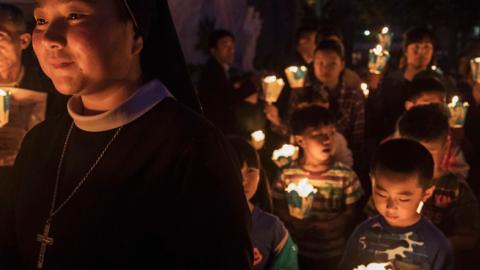June 4, 1989, was a seminal day for China’s faithful, as the Chinese government massacred thousands of pro-democracy demonstrators in Beijing’s Tiananmen Square. The same day, Communist Party leaders watched as pro-democracy candidates in Poland supplanted Communist rule—with Pope John Paul II’s indispensable support. Together the events jolted Beijing into tightening its control over religion.
Post-Tiananmen, Christian groups were made to register with state “patriotic” associations or risk punishment as “evil cults.” Anxious to maintain access to Western markets, Beijing selectively enforced these rules in large cities. The rural Christian underground bore the brunt of church closings and mass internment of their members in labor camps.
Chinese Christianity still experienced spectacular growth in the next 30 years. Today there could be well over 100 million Chinese Christians. All but 36 million practice their faith outside government control. Purdue sociologist Fenggang Yang has projected that China could have nearly 250 million Christians by 2030. The Communist Party numbers 90 million.
Read the full article in the Wall Street Journal "here":https://www.wsj.com/articles/inside-chinas-war-on-christians-11559256446















